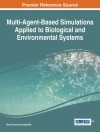This Scientific and Technical Report (STR) presents the findings of the IWA Task Group on River Water Quality Modelling (RWQM). The task group was formed to create a scientific and technical base from which to formulate standardized, consistent river water quality models and guidelines for their implementation. This STR presents the first outcome in this effort: River Water Quality Model No. 1 (RWQM1). As background to the development of River Water Quality Model No.1, the Task Group completed a critical evaluation of the current state of the practice in water quality modelling. A major limitation in model formulation is the continued reliance on BOD as the primary state variable, despite the fact BOD does not include all biodegradable matter. A related difficulty is the poor representation of benthic flux terms. As a result of these limitations, it is impossible to close mass balances completely in most existing models. These various limitations in current river water quality models impair their predictive ability in situations of marked changes in a river’s pollutant load, streamflow, morphometry, or other basic characteristics. RWQM 1 is intended to serve as a framework for river water quality models that overcome these deficiencies in traditional water quality models and most particularly the failure to close mass balances between the water column and sediment. To these ends, the model incorporates fundamental water quality components and processes to characterise carbon, oxygen, nitrogen, and phosphorus (C, O, N, and P) cycling instead of biochemical oxygen demand as used in traditional models. The model is presented in terms of process and components represented via a ‘Petersen stoichiometry matrix’, the same approach used for the IWA Activated Sludge Models. The full RWQM1 includes 24 components and 30 processes. The report provides detailed examples on reducing the numbers of components and processes to fit specific water quality problems. Thus, the model provides a framework for both complicated and simplified models. Detailed explanations of the model components, process equations, stoichiometric parameters, and kinetic parameters are provided, as are example parameter values and two case studies. The STR is intended to launch a participatory process of model development, application, and refinement. RWQM1 provides a framework for this process, but the goal of the Task Group is to involve water quality professionals worldwide in the continued work developing a new water quality modelling approach. This text will be an invaluable reference for researchers and graduate students specializing in water resources, hydrology, water quality, or environmental modelling in departments of environmental engineering, natural resources, civil engineering, chemical engineering, environmental sciences, and ecology. Water resources engineers, water quality engineers and technical specialists in environmental consultancy, government agencies or regulated industries will also value this critical assessment of the state of practice in water quality modelling. Key Features presents a unique new technical approach to river water quality modelling provides a detailed technical presentation of the RWQM1 water quality process model gives an informative critical evaluation of the state of the practice in water quality modelling, and problems with those practices provides a step by step procedure to develop a water quality model Scientific & Technical Report No. 12
Dietrich Borchardt & Mogens Henze
River Water Quality Model No.1 [PDF ebook]
River Water Quality Model No.1 [PDF ebook]
Mua cuốn sách điện tử này và nhận thêm 1 cuốn MIỄN PHÍ!
Ngôn ngữ Anh ● định dạng PDF ● ISBN 9781780402789 ● Biên tập viên Dietrich Borchardt & Mogens Henze ● Nhà xuất bản IWA Publishing ● Được phát hành 2001 ● Có thể tải xuống 6 lần ● Tiền tệ EUR ● TÔI 2964587 ● Sao chép bảo vệ Adobe DRM
Yêu cầu trình đọc ebook có khả năng DRM












